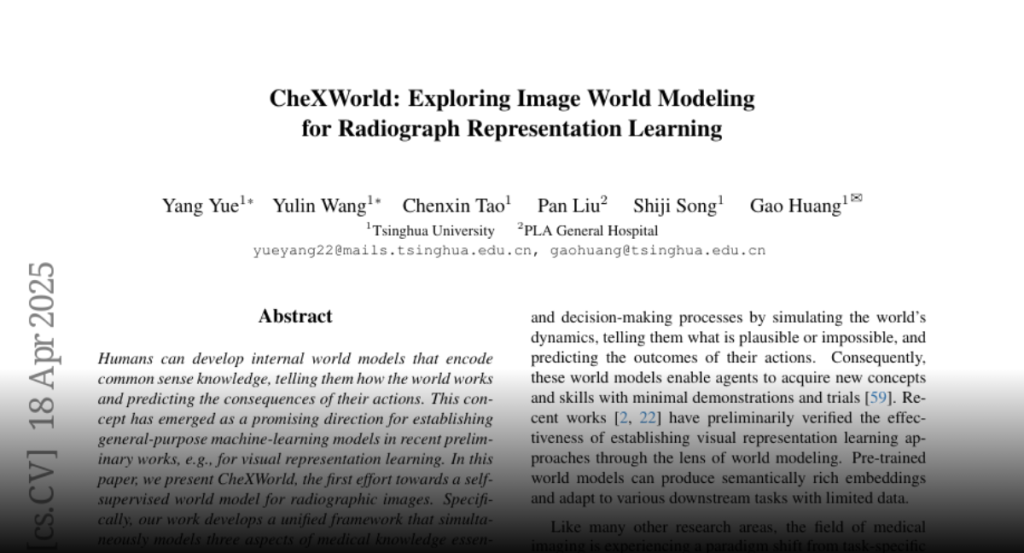Humans can develop internal world models that encode common sense knowledge,
telling them how the world works and predicting the consequences of their
actions. This concept has emerged as a promising direction for establishing
general-purpose machine-learning models in recent preliminary works, e.g., for
visual representation learning. In this paper, we present CheXWorld, the first
effort towards a self-supervised world model for radiographic images.
Specifically, our work develops a unified framework that simultaneously models
three aspects of medical knowledge essential for qualified radiologists,
including 1) local anatomical structures describing the fine-grained
characteristics of local tissues (e.g., architectures, shapes, and textures);
2) global anatomical layouts describing the global organization of the human
body (e.g., layouts of organs and skeletons); and 3) domain variations that
encourage CheXWorld to model the transitions across different appearance
domains of radiographs (e.g., varying clarity, contrast, and exposure caused by
collecting radiographs from different hospitals, devices, or patients).
Empirically, we design tailored qualitative and quantitative analyses,
revealing that CheXWorld successfully captures these three dimensions of
medical knowledge. Furthermore, transfer learning experiments across eight
medical image classification and segmentation benchmarks showcase that
CheXWorld significantly outperforms existing SSL methods and large-scale
medical foundation models. Code & pre-trained models are available at
https://github.com/LeapLabTHU/CheXWorld.

